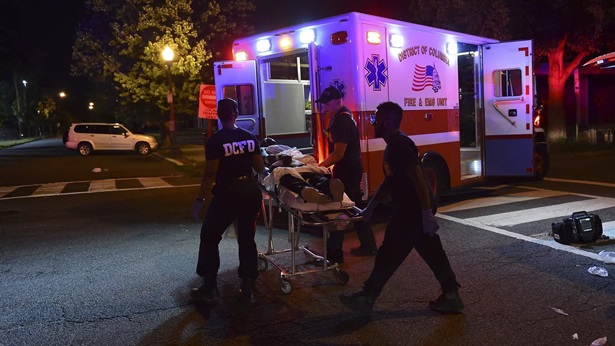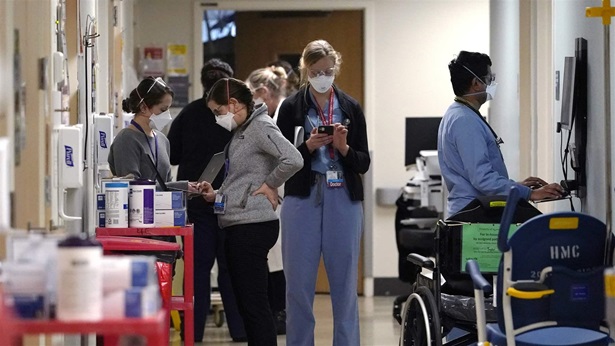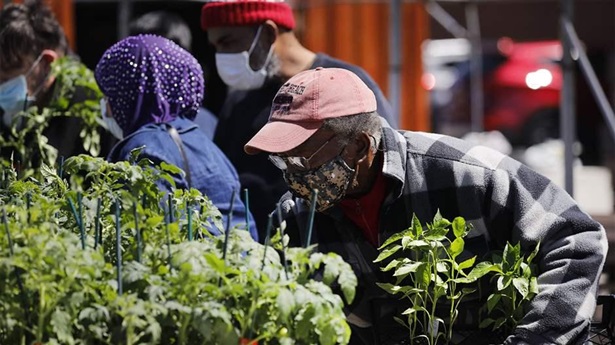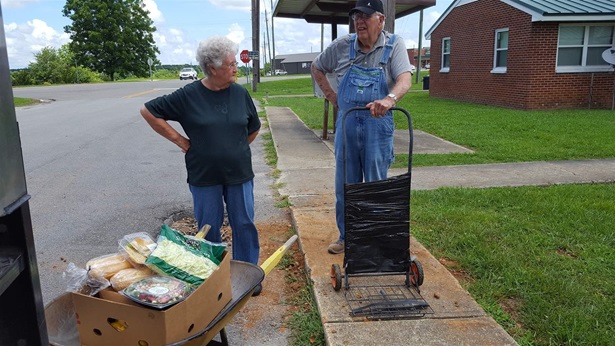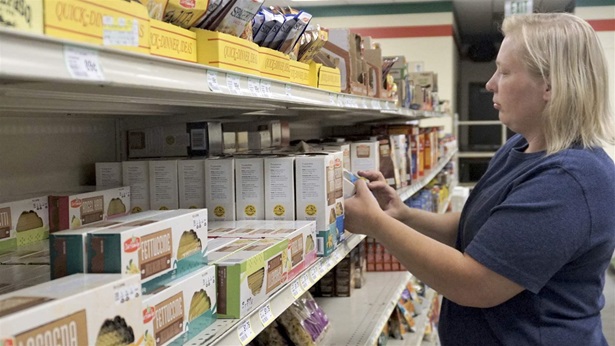Source https://www.pewtrusts.org/en/research-and-analysis/blogs/stateline/2023/04/13/voting-to-raise-their-own-pay-puts-state-lawmakers-in-a-bind
Voting to Raise Their Own Pay Puts State Lawmakers in a Bind
“Could a single parent be a state rep? Absolutely not. If you are the sole wage earner in a family, you can’t afford it — or even if you’re the primary wage earner,” Louisiana state Rep. Joe Marino said in an interview with Stateline.
The salary for a Louisiana state lawmaker is $16,800 a year — unchanged since 1980. Marino, an Independent, introduced a bill in March that would hike legislators’ salaries to $60,000 a year — $4,600 less than what $16,800 would be in today’s dollars.
Unless salaries are raised, he said, “We’ll have a legislature of only wealthy or retired people.”
State legislative salaries range widely. In New York, lawmakers gave themselves a 29% raise to $142,000 annually as of January, making the legislature the highest paid in the country. At the other end of the spectrum, New Mexico legislators receive no salary. Many states also pay a per diem rate during sessions, which may be taxable as income, and mileage.
New Mexico lawmakers receive per diem and mileage, so they’re not the lowest paid in the country; that distinction goes to New Hampshire, which pays legislators $100 a year with no per diem. New Hampshire’s nominal salary has been in the state constitution since 1889, and New Mexico’s unpaid legislature dates to the constitution adopted with statehood in 1912.
Efforts this year in both legislatures to put the question of salaries to voters failed.
Resistance to higher state legislative salaries is purposeful and historic. New Hampshire and New Mexico are among states that prize a “citizen legislature” — people from different walks of life who meet at the state capitol for a few weeks or months and go back to their regular jobs — rather than professional politicians who make a career of legislating.
Smaller and more rural states tend to have part-time legislatures, pay legislators less and have smaller legislative staffs, while the largest states usually have full-time legislatures, pay the most and have large legislative staffs, according to the National Conference of State Legislatures.
But lawmakers face a heavier workload and greater demands on their time beyond state legislative sessions than they used to, legislators and scholars say.
“It’s not a part-time job. It’s not a full-time job. It’s a full-time-plus job, a fully encompassing job,” New Hampshire state Rep. Walt Stapleton, a Republican in his third term, told Stateline.
Stapleton this year introduced a resolution to put a constitutional amendment on the ballot that would raise pay to $2,500 a year or $5,000 for the biennium. In today’s dollars, that $2,500 is worth less than $100 in 1889, but his measure failed.
“It’s surprising that you can get people to sacrifice a lot in their private life and personal finances to run for state legislatures,” said Peverill Squire, a political scientist at the University of Missouri who has studied state legislatures for decades.
“The idea has long been that legislative service should be seen as public service. That’s easy to say when it’s not your paycheck,” he said.
States use three approaches to set legislators’ compensation, according to NCSL. As of last year, 19 states either set salaries by law or refer ballot initiatives on pay to voters. With this hands-on approach, legislators face what the conference calls the “pay problem,” that is, lawmakers risk a political firestorm if they raise their own salaries.
“Legislators are hesitant to raise pay because of the optics around it,” Josalyn Williams, policy associate at the conference’s Center for Legislative Strengthening, told Stateline.
In 21 states, independent commissions recommend salaries, insulating the legislature from criticism. For example, Minnesota lawmakers will receive a 7.25% pay increase in July, from $48,250 to $51,750 a year, as set by the state’s Legislative Salary Council. Voters in 2016 approved a constitutional amendment authorizing the council. Previously, legislators set their own pay, which had remained at $31,140 from 1999 until the council started determining salaries in 2017.
Ten states and Washington, D.C., link pay to an outside factor — such as median household income or the inflation rate.
Alabama voters, for example, approved a constitutional amendment in 2012 tying legislators’ pay to the median of the state household income. The salary in 2022 was $53,956.
Legislators in at least eight other states this year considered or are considering bills related to legislative compensation — Alaska, Kansas, Maine, North Carolina, Oregon, Vermont, Virginia and West Virginia.
A newly appointed commission recommended Alaska legislators receive a 67% raise to $84,000 a year. Legislators tried to cancel the increase, but Gov. Mike Dunleavy, a Republican, vetoed it, so the raise is expected to take effect Jan. 1, barring further developments.
After Georgia legislators failed to pass bills raising their pay, Gov. Brian Kemp, a Republican, last year proposed in his budget and lawmakers approved a $5,000 cost-of-living raise for state legislators and all state employees, giving lawmakers their first increase since 2007 — to $22,342.
Voters around the country have punished legislators who raised their own pay.
When Pennsylvania lawmakers voted at 2 a.m. July 7, 2005, to raise their pay as well as that of other elected officials, it ignited a grassroots movement to defeat incumbents. The pay raise was rescinded a few months later, but dozens of legislators retired or lost their seats in the next primary and general elections.
Pennsylvania lawmakers received a 7.8% cost of living adjustment Dec. 1, raising salaries of rank-and-file legislators to $102,844. Half a dozen Pennsylvania legislators refused to take a pay increase this session.
Legislators in Texas make $7,200 a year in salary as well as a per diem of $221 a day and mileage. The Texas legislature meets in regular session every two years for up to 140 days, and the governor can call special sessions of 30 days as needed.
“There are a lot of challenges to the lack of a living wage for legislators,” Arturo Vargas, executive director of the National Association of Latino Elected and Appointed Officials, said in an interview. “It limits the ability of those who are the average citizen from serving in office. It’s a minority of the workforce that can set their own work schedule.”
Most people don’t know who their state legislator is, whether the legislature is full or part time or what the compensation is, surveys show. Salaries are far lower than most people think. Asked how much their legislators are paid, 66% of New Mexico residents guessed $35,000 or more, a Common Cause New Mexico survey last year found.
New Mexico state Rep. Angelica Rubio, a Democrat, this year sponsored the bill for a ballot initiative that would have asked voters for the authority to establish a commission on legislative compensation. A majority of Democrats, Republicans and independents in the Common Cause survey favored having an impartial commission set legislators’ salaries. Rubio’s bill passed in the House with only Democratic support and died in the Senate.
“People in the legislature who oppose salaries have a romanticized notion of the citizen legislature,” Rubio said in an interview with Stateline. “They have outside income and can afford to serve without pay.”
A community organizer whose consulting business works with nonprofits on housing and other social issues, Rubio tries to recruit legislative candidates, but, she said, the path to the legislature “is closed off to the people I work with. When people find out there’s no pay, they say no.”
Even with per diem and mileage allotments, serving in the legislature without a salary can be financially challenging.
“I have to save throughout the year to be able to live in Santa Fe for two months — and I come back in the red,” said Rubio, 43.
In Louisiana, Marino, an attorney in private practice and former Gretna city council member, has been elected twice to the legislature without facing any opposition.
“The pool of people who are able to run keeps shrinking,” he said. “What job do you have where you can be gone from three to six months and with only a week’s notice be called back” into special session? “No job.”
If his proposed pay raise succeeds, Marino won’t benefit. He is not running for reelection, saying low pay and wanting to spend more time with his family are factors in his decision.
“I’m trying to make a difference, but that doesn’t pay the mortgage,” he said.



